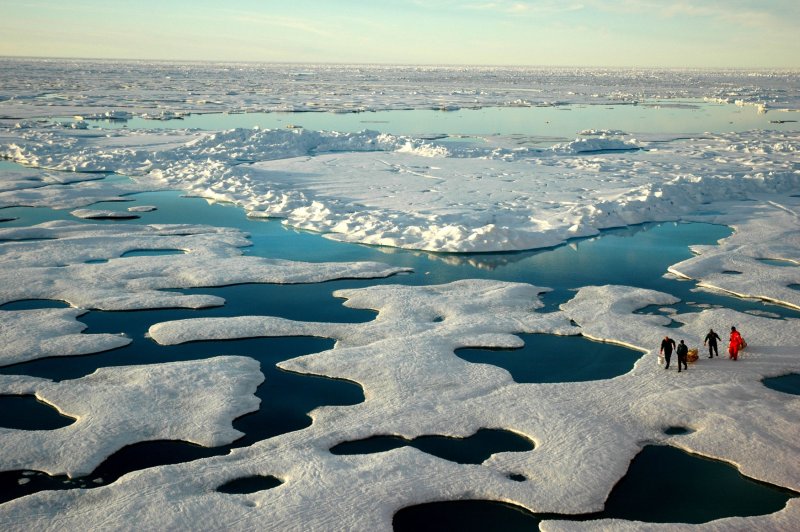Scientists tread carefully through a seemingly endless landscape of ice, sea, and meltwater in the Canada Basin of the Arctic on July 22, 2005. The blanket of ice coating Earth's northernmost seas was thin and ragged in July, setting a record low for sea ice extent for the month. Sea ice stretched across only 3.06 million square miles whereas the long-term July average is 3.9 million. Scientist note that this breakup of ice is a result of global warming. Photo made from the U.S. Coast Guard Icebreaker Healy. UPI/Jeremy Potter/NOAA |
License Photo
KAMPALA, Uganda, Nov. 18 (UPI) -- The risk from extreme weather events is likely to increase if the world continues to get warmer, scientists at a climate conference in Uganda said.
An assessment by the Intergovernmental Panel on Climate Change said it was "very likely" pollution emissions had led to an increase in daily maximum temperatures, which could lead to longer and more intense droughts in some areas and increased precipitation in others, the BBC reported.
"It underlines the complexity and diversity of factors that are shaping human vulnerability to extremes," IPCC chairman Rajendra Pachauri said.
"Extreme events are rare, which means there are few data available to make assessments regarding changes in their frequency or intensity," he said.
Small island settlements, as well as coastal communities, could be particularly vulnerable as a result of sea-level rise and higher temperatures in both developed and developing nations, the report said.
"Rapid urbanization and the growth of mega-cities, especially in developing nations, have led to the emergence of highly vulnerable urban communities," it said.
Gerald Meehl, a senior scientist at the National Center for Atmospheric Research and one of the report's reviewers, said it highlights why climate change means more than just a gradual rise in the global temperatures.
"The fact is, a small change in average temperature can have a big impact on extremes," Meehl told The Washington Post.
"It's pretty straightforward: As average temperatures go up, it's fairly obvious that heat extremes go up and [the number of] low extremes go down."















